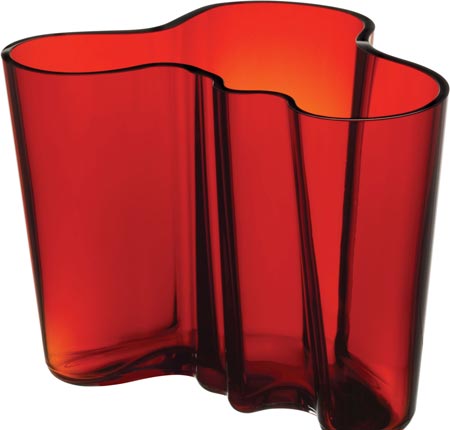The Secret History Of: Alvar Aalto Savoy flower vase

Your support helps us to tell the story
From reproductive rights to climate change to Big Tech, The Independent is on the ground when the story is developing. Whether it's investigating the financials of Elon Musk's pro-Trump PAC or producing our latest documentary, 'The A Word', which shines a light on the American women fighting for reproductive rights, we know how important it is to parse out the facts from the messaging.
At such a critical moment in US history, we need reporters on the ground. Your donation allows us to keep sending journalists to speak to both sides of the story.
The Independent is trusted by Americans across the entire political spectrum. And unlike many other quality news outlets, we choose not to lock Americans out of our reporting and analysis with paywalls. We believe quality journalism should be available to everyone, paid for by those who can afford it.
Your support makes all the difference.Alvar Aalto (1898 – 1976) was much more than a designer of pretty flower vases, he is considered the most important Finnish architect of the twentieth century.
From a young age, Aalto felt destined for greatness, emblazoning his name in two-foot-high letters outside his office for "Architecture and Monumental Art".
His dream was realised. Renowned Aalto buildings such as the 1928 Paimio Sanatorium and the 1927 Viipuri Library, both in Finland, soon confirmed him as an important contributor to the international Modernist movement.
By the 1950s Aalto was considered so important that Finnair airliners would wait on the runway should be late for a flight, which he often did on purpose.
So how would he feel about being remembered for a simple vase designed in 1937 to adorn the tables of a swish new Helsinki restaurant, The Savoy?
Aalto's original sketches had to be slightly modified because it was impossible to replicate some of the sharper curves he desired with the available moulding techniques, but the Savoy Vase, now more commonly known as the Aalto Vase, emerged a truly revolutionary piece of glassware: its folds of glass meant that flowers fell away from each other, turning their heads towards each diner around the Savoy's tables, rather than standing upright – a cheeky affront to the staid rigour of traditional flower arranging.
Enthusiastic stockists of the vase, today produced by the Iittala glass factory in Finland, include Skandium, a furniture store that opened 10 years ago to bring Scandinavian designs to Britain.
"This vase is one of the main reasons we opened Skandium," says owner Chrystina Schmidt, a Finn herself. "It is a great classic that has survived the test of time. Simply put, flowers look just gorgeous in it, and even without flowers the form is very beautiful, just to have as an object in your home."
Skandium alone shifts about 500 every year. A small example in clear or white is the best sellers and goes for £100, while a giant 600mm vase costs £2,000.
With prices like these, surely Aalto delighted in the vase's success? In fact, he never made a penny from the design. Not a sou. Of course, he was paid for his work decorating the Savoy, but the original design, crayon drawings now in London's Design Museum, was an entry in the Karhula Iittala Glass Design competition.
And yes, you guessed it – that Karhula Ittala competition was held by the very same Iittala factory that churns the vases out today. To be fair, Aalto was given an exhibition at New York's Museum of Modern Art the following year.
Join our commenting forum
Join thought-provoking conversations, follow other Independent readers and see their replies
Comments